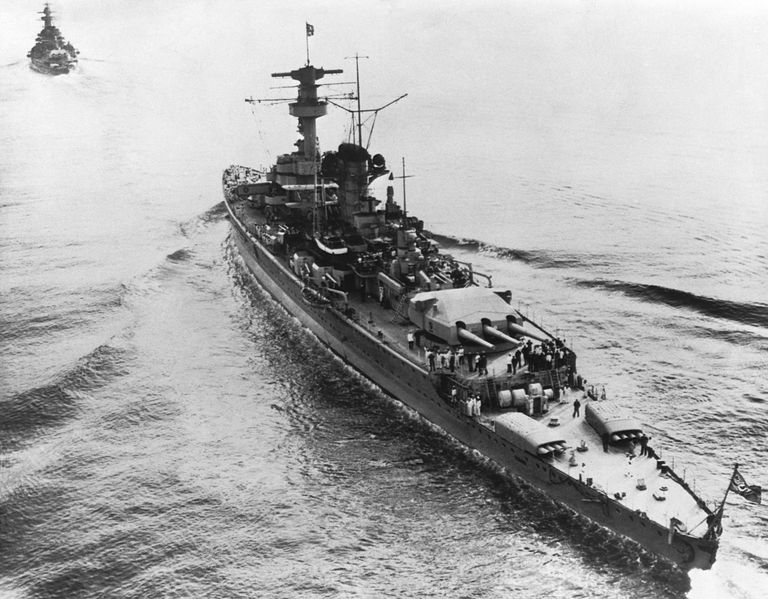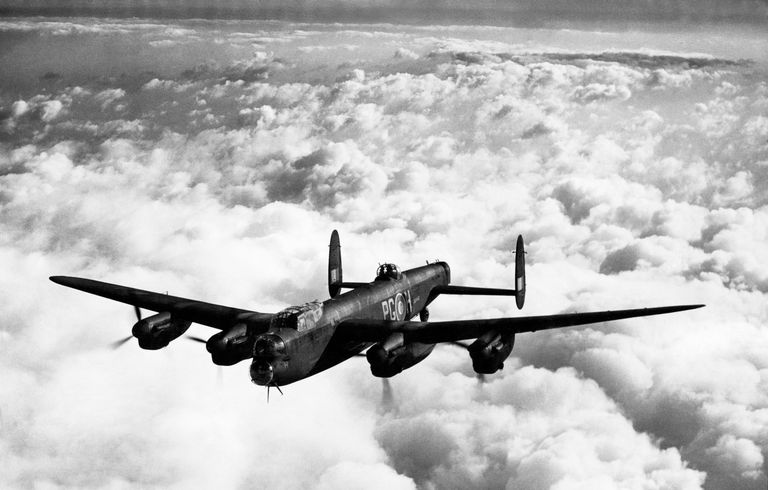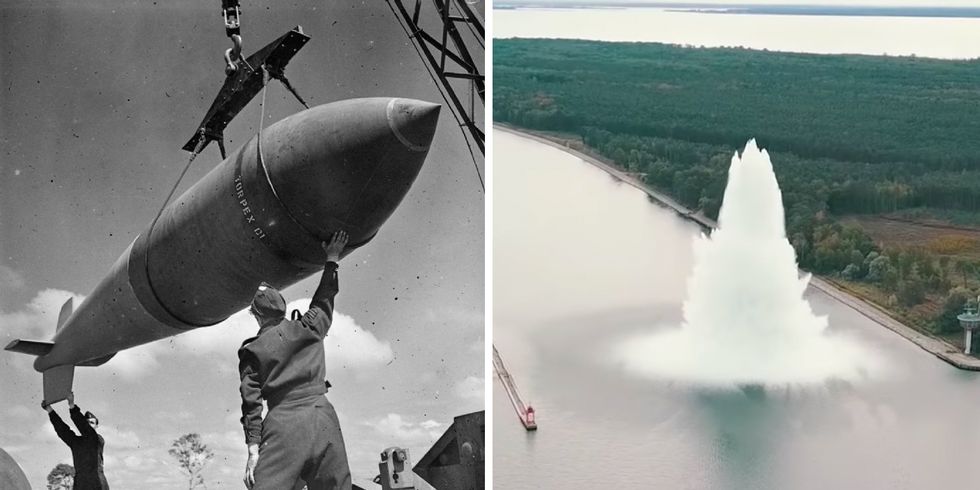La Armada Polaca detono una bomba “Tallboy” de la IIWW . La bomba sin detonar de la Segunda Guerra Mundial más grande encontrada en Polonia detonó durante el proceso de desactivación, dijo un portavoz de la Armada polaca. La probabilidad de que la bomba, en el fondo de un canal de navegación del Mar Báltico detone se había calculado en 50-50 , todos los buzos salieran ilesos.
A World War II aerial bomb that recently washed up in Poland accidentally exploded as navy divers attempted to disarm it underwater by burning out the explosives inside. The non-nuclear, World War II-era “Tallboy” bomb—left behind after a wartime attack on a German navy warship—blew up in place, but didn’t cause any injuries.
Authorities discovered the bomb in the Piastowski Canal, in the Polish coastal town of Swinoujscie. Experts believe the the Royal Air Force dropped the bomb in the spring of 1945, during an attack on the German heavy cruiser Lutzow.

According to Maritime Executive, Polish navy divers planned a five-day operation to disarm the underwater bomb. The divers were to clear mud and sediment around the bomb, and then ignite the explosives inside. Polish authorities evacuated everyone within 1.5 miles of the bomb’s location.
Tallboys used Torpex, an obsolete, World War II-era explosive. Many explosives, including Torpex, require a detonation wave created by another explosive charge (such as a blasting cap) to reliably explode. Otherwise, explosives exposed to fire will often just burn instead of blow up. U.S. National Institute of Health (NIH) guidelines for dealing with Torpex in firefighting situations recommend evacuating the nearby area and allowing the fire to simply to burn out.
Well, that’s what usually happens, at least.
Unfortunately, as the NIH warns, Torpex “may explode under prolonged exposure to heat or fire.” Tallboy, then, unexpectedly blew in place, sending up a spectacular pillar of water. Thankfully, Reuters says no one was injured in the blast.
The British government developed Tallboy during World War II as a means of attacking hardened German war facilities. The bomb was 21 feet long and 3 feet, 8 inches wide. The 12,000-pound bomb included 5,100 pounds of Torpex D1 explosive. As GlobalSecurity.org notes:
Dropped from 20,000 feet, a Tallboy made a 80 feet deep crater, 100 feet across. The bomb had a high terminal velocity, variously estimated at 3,600 and 3,700 feet a second (much faster than the speed of sound), and at these speeds it could go through 16 feet of concrete.
How powerful was the bomb? We don’t know if any of the explosive burned off prior to detonation, but the 5,100 pounds of Torpex originally packed in the Tallboy was the equivalent of 7,600 pounds of TNT, or just under four tons.
An Mk.84 2,000-pound aerial bomb used by the U.S. military includes 945 pounds of Tritonal, which equals about 1,100 pounds of TNT. For comparison, the August explosion in Beirut, Lebanon is estimated at approximately 500 tons, while the bomb dropped on Hiroshima in 1945 was about 16,000 tons.

The AVRO Lancaster heavy bomber was the only aircraft capable of carrying the Tall Boy bomb.
Mirrorpix Getty Images
Modified RAF Lancaster bombers carried Tallboys and dropped 854 of the bombs during World War II. According to the Canadian Bomber Command museum, the bombs were used against “heavily reinforced V-1 and V-2 assembly and launch sites, submarine pens, tunnels, oil refining and storage sites, viaducts, canals, and bridges. Its most spectacular success was with the sinking of the Battleship Tirpitz.”
Unexploded bombs from both World War I and World War II are regularly found buried across former European battlefields and bombing targets, but this is likely the largest unexploded bomb found in a long time.
Fuente: https://www.popularmechanics.com


